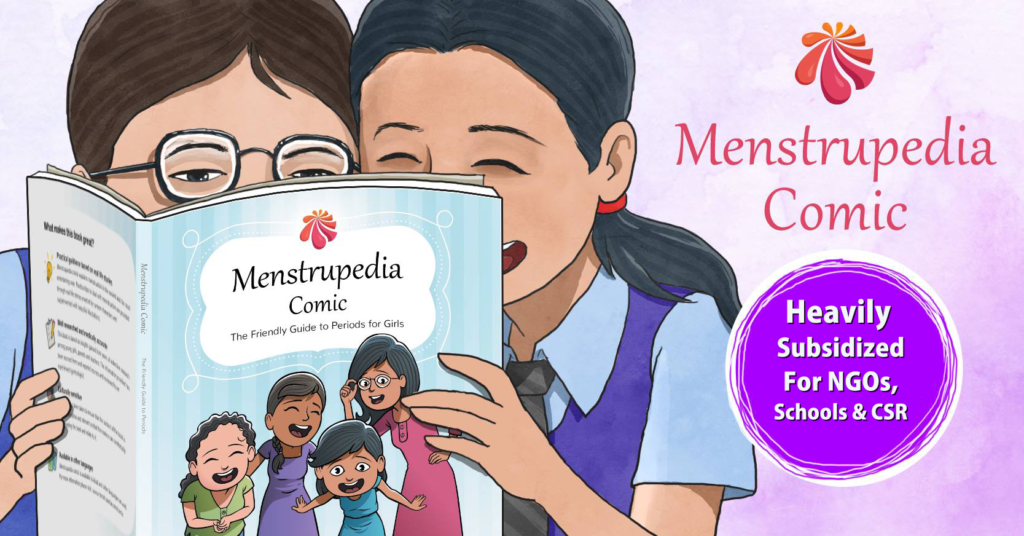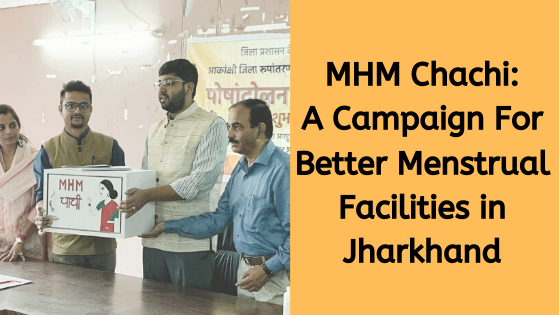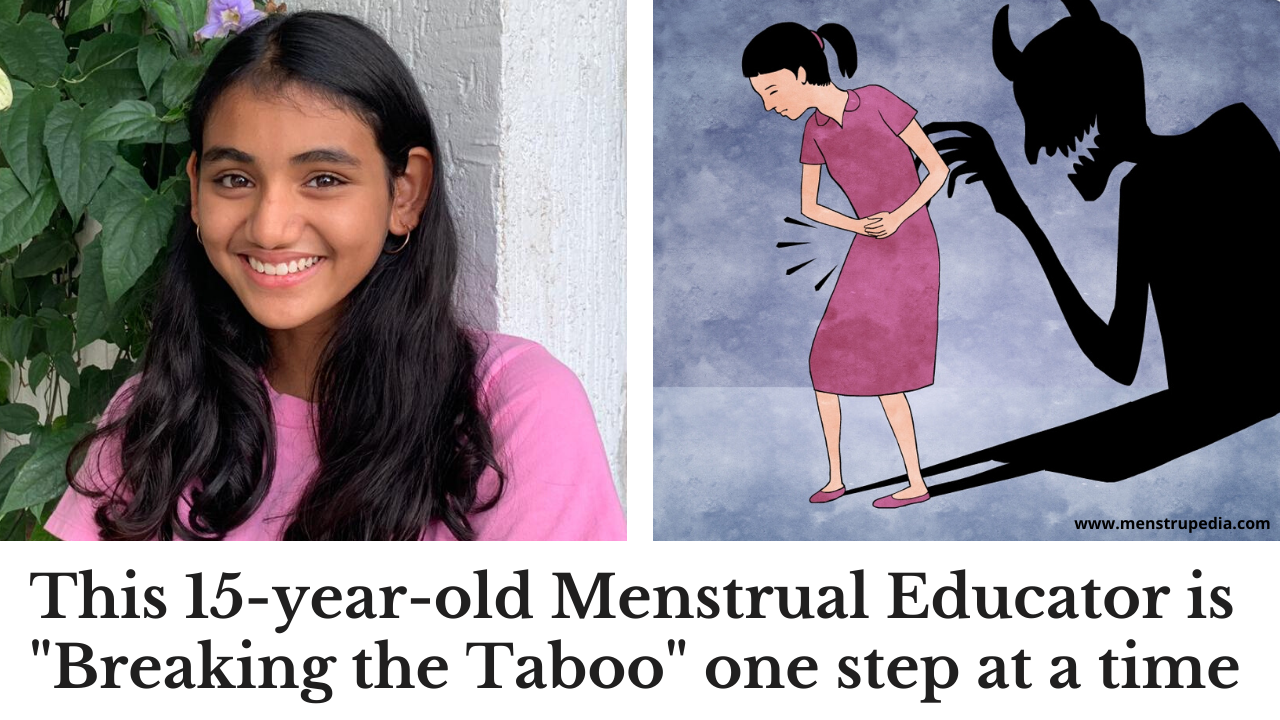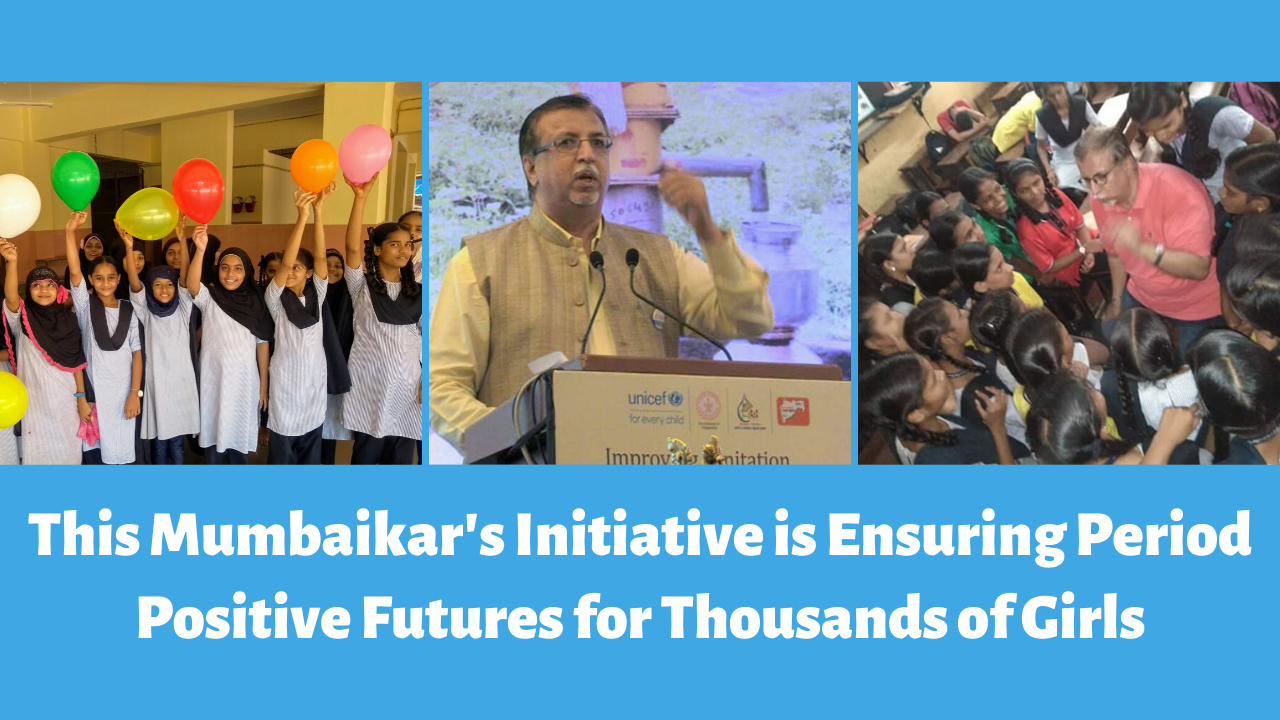Satwik Mishra, an Aspirational District Fellow at Ranchi, recently approached Menstrupedia regarding his initiative Menstrual Hygiene Management (MHM) Chachi. When we came to know how he is helping the Ranchi district administration create MHM awareness amongst thousands of girls, we found it so remarkable that we, at once, decided to have a detailed chat with him. His goal is to set up holistic menstrual education kits in maximum schools across Jharkhand so that the information related to MHM is easily accessible to girls. We are so glad that Menstrupedia Comic is a part of these educational kits.
To know more about how this initiative began and how it’s creating an impact, we spoke to Satwik Mishra at length. In conversation with Satwik Mishra…
1. Please tell us a little something about yourself, your initiative and the kind of work you do.
Hailing from Purnea district of Bihar, I studied engineering at VIT University, Vellore. Just like most engineers, I kick-started my career in the corporate world. However, soon, my inner calling drifted me towards the development sector. After doing fellowships at organizations like SBI Youth for India and SPARC Fellowships, I decided to undertake a path that would help me create a larger impact in the society. So now, I am assisting the district administration, Ranchi in implementing India’s most ambitious scheme ‘Transformation of Aspirational District Program’, under Aspirational District Fellowship, in one of the least developed and left-wing extremism affected areas of the country. While my primary job is to assist the district administration in executing several government schemes through ideating, planning, implementing, monitoring and documenting interventions, I also enjoy working on several innovative and out of the box projects.

In this fellowship, one of my top priorities are creating awareness and sensitizing masses about critical issues. Last year, I worked on implementing Garima Abhiyan in Simdega district of Jharkhand. Garima Abhiyan is India’s first district-wide campaign to overcome societal silence on menstrual stigma and to create awareness about Menstrual Hygiene Management (MHM). This campaign reached out to the entire population base of the district which includes a total of 6 lakh people from every demographic segment. The idea won 3M CII Young Innovator’s Challenge Award during CII Innovation Summit 2019. The idea has now scaled up further and getting replicated across the state of Jharkhand.
Currently, I am working on ‘MHM Chaachi’ project. This project aims to ensure the availability of information pertaining to MHM at the school level.
2. What made you decide upon running an initiative like MHM Chachi?
I came across a research report of UNICEF that revealed that 88% of menstruating women of Bihar and Jharkhand couldn’t ever get access to any kind of absorbent during menstruation. I was taken aback when I realized that the issue was so deeply rooted and widely spread in these states. On probing further, I read a 2014 report by the NGO Dasra titled Spot On! The report states that nearly 23 million girls drop out of school annually due to a lack of proper menstrual hygiene management facilities. Not only that, the report revealed that 70 percent of mothers with menstruating daughters considered menstruation as dirty and 71 percent of adolescent girls remained unaware of menstruation till menarche. That was the day I decided that I had to do something to bring about a change and combat the negligence our society has about menstruation and MHM.
3. Can you tell us more about the setup of MHM Chachi? What were the demographics like?
Under the MHM Chachi initiative, we are setting up an MHM Guide cum toolbox in schools. These kits contain IEC materials and an educational comic book (Menstrupedia Comic) that teaches everything related to menstruation and MHM in a fun and easy way. In the first phase, these boxes have been put up in 13 Kastoorba Gandhi Balika Vidyalaya (KGBVs) – residential girls’ schools in the district. The district administration, Ranchi looks forward to covering as many as 100 schools by the end of this year under this initiative. It would have never been possible for the district administration to roll out this initiative without perpetual support of agencies like Water Sanitation and Supportive Council (WSSCC) and Menstrupedia. These agencies immensely helped us gather the required resources.
4. Were there any challenges you faced while executing this project?
The first and very obvious challenge that any man faces out in any patriarchal society while working on the menstrual issue is – ‘Why do you have to do that? It’s a woman’s thing.’
Any integrated intervention pertaining to this issue requires convincing a lot of stakeholders. For me, winning the stakeholders’ confidence was the most challenging task in implementing this project. Getting men engaged in the process has been another bottleneck in the project implementation. However, the good part was that it was equally an easy task for me to get a nod from my boss Deputy Commissioner, Ranchi Ray Mahimapat Rai, who didn’t only approve the idea of implementing MHM Chaahi but also helped me in refining the concept of initiative and implementing it.
5. What are the changes you hope this initiative would bring in the lives of girls and women?
While this initiative will create awareness about MHM among girls and women, it will also catalyze the process of breaking the stigma attached to the subject of menstruation. I believe that menstruation might be just ‘a woman thing,’ but creating an environment with the availability of MHM facilities is everybody’s responsibility. In my view, this intervention is not only about girls and women, but about men and boys too. Being a man, I remember, how difficult it was for me to see my sisters and female friends suffering during the initial days of menstruation. If I had been aware of the physiology of menstruation and MHM, I wouldn’t have felt helpless back then.
6. Any insights on how you went about conceptualizing it? Did you adopt certain techniques and advocacy to approach the problem?
While working towards this cause in Simdega, I realized it was too late for us to sensitize a certain section of the population; the adults who had strongly internalized that menstruation was a taboo. I understood that the desired seed has to be sown right from the childhood days and hence, came the idea of this intervention of shaping the right attitude and mindset at the beginning of behavior building process.
7. Best moment/part of building these centers you would like to share, perhaps something that makes you feel rewarded for the effort you put in?
Recently, I had a chance to visit one such school where the MHM Chachi box was installed. I was happy to see the excitement of girls while I was collecting feedback about the same. Equally pleasing was the experience of seeing their comfort level in talking about menstruation openly and in front of men. I could see that the intervention was moving ahead on its path exactly as we had envisioned.
8. Your message to our readers especially the male readers.
India has groomed and nurtured the idea of maintaining societal silence over the menstruation issues for too long now. Girls and women have carried menstruation as a burden for too long now. We, the men, have not played our role in achieving gender equality for too long now. We have carried forward the dogmas of considering menstruation just as women’s responsibility for too long now. It’s time to break the silence now. Let’s do our least and say it loud ‘Menstruation is a natural process and we will assure that no woman feels uneasy while talking about it publically.’







